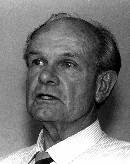Learing the basic skills of manual therapy: Fundamentals of Maitland’s Mobilization

Quotes from the legend:
1. The aim of examining movements is to find one or more comparable “signs” in an appropriate joint or joints.
2. Joint movements can never be classed as normal unless firm overpressure can be applied painlessly.
3. During examination and assessment pain should never be considered without relation to the range or vice versa.
Performing the act:
Different grades of movement are administered as oscillatory movements. Oscillatory movements have a positive & negative cycle. The positive portion of the cycle is one where impact of the force leads the accessory movement to sink into the tissues. Where as the negative portion of the cycle is one where, the therapist has to release the force to so that tissues can return to where it has started.
Types of oscillatory movements:
Oscillatory movements are administered in
1. Rhythmic manner or
2. With Irregular rhythm
Under most circumstances the treatment used is regular & rhythmical.
The informality about the treatment position:
1. For the purpose of learning the techniques various positions are adopted. These positions vary from physiotherapist to physiotherapist and not mandatory as similar positions many not suit all physiotherapist. Each physiotherapist should modify the position to suit her own circumstances.
2. Hence the whole attention is focused on learning the skill & feel of the joint movement so as to make them instinctive.
The bottom line that matches words from my heart
&
Advice to novice manipulators
&
Advice to novice manipulators
Many authorities including Maitland emphasized the fact that “Brute strength is not essential to the use of manipulative treatment- rather, what is required are perceptive hands & an agile, methodological mind".
Source:
excerpt from my manual therapy class 9


Comments
Post a Comment